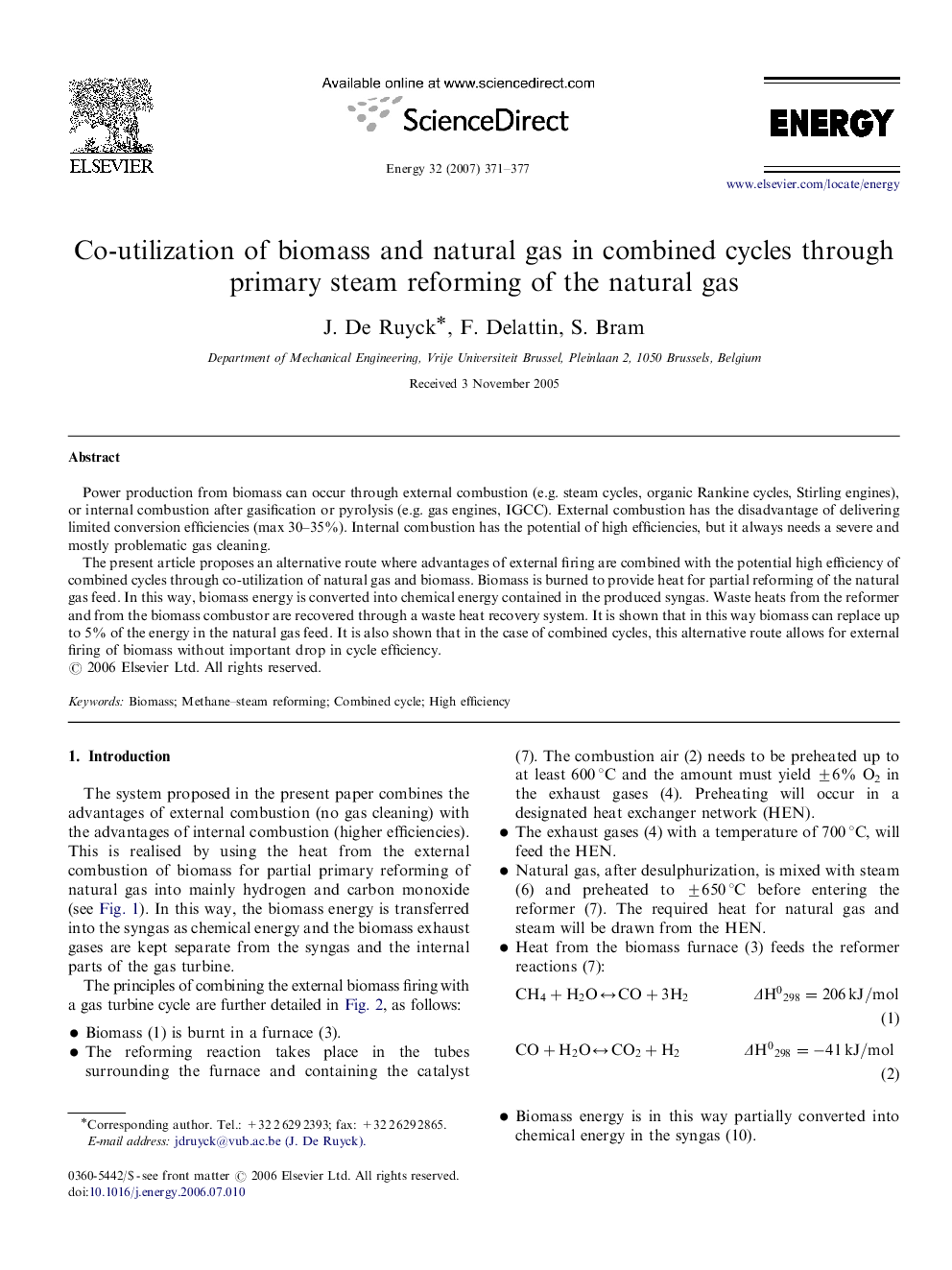| Article ID | Journal | Published Year | Pages | File Type |
|---|---|---|---|---|
| 1736051 | Energy | 2007 | 7 Pages |
Power production from biomass can occur through external combustion (e.g. steam cycles, organic Rankine cycles, Stirling engines), or internal combustion after gasification or pyrolysis (e.g. gas engines, IGCC). External combustion has the disadvantage of delivering limited conversion efficiencies (max 30–35%). Internal combustion has the potential of high efficiencies, but it always needs a severe and mostly problematic gas cleaning.The present article proposes an alternative route where advantages of external firing are combined with the potential high efficiency of combined cycles through co-utilization of natural gas and biomass. Biomass is burned to provide heat for partial reforming of the natural gas feed. In this way, biomass energy is converted into chemical energy contained in the produced syngas. Waste heats from the reformer and from the biomass combustor are recovered through a waste heat recovery system. It is shown that in this way biomass can replace up to 5% of the energy in the natural gas feed. It is also shown that in the case of combined cycles, this alternative route allows for external firing of biomass without important drop in cycle efficiency.
